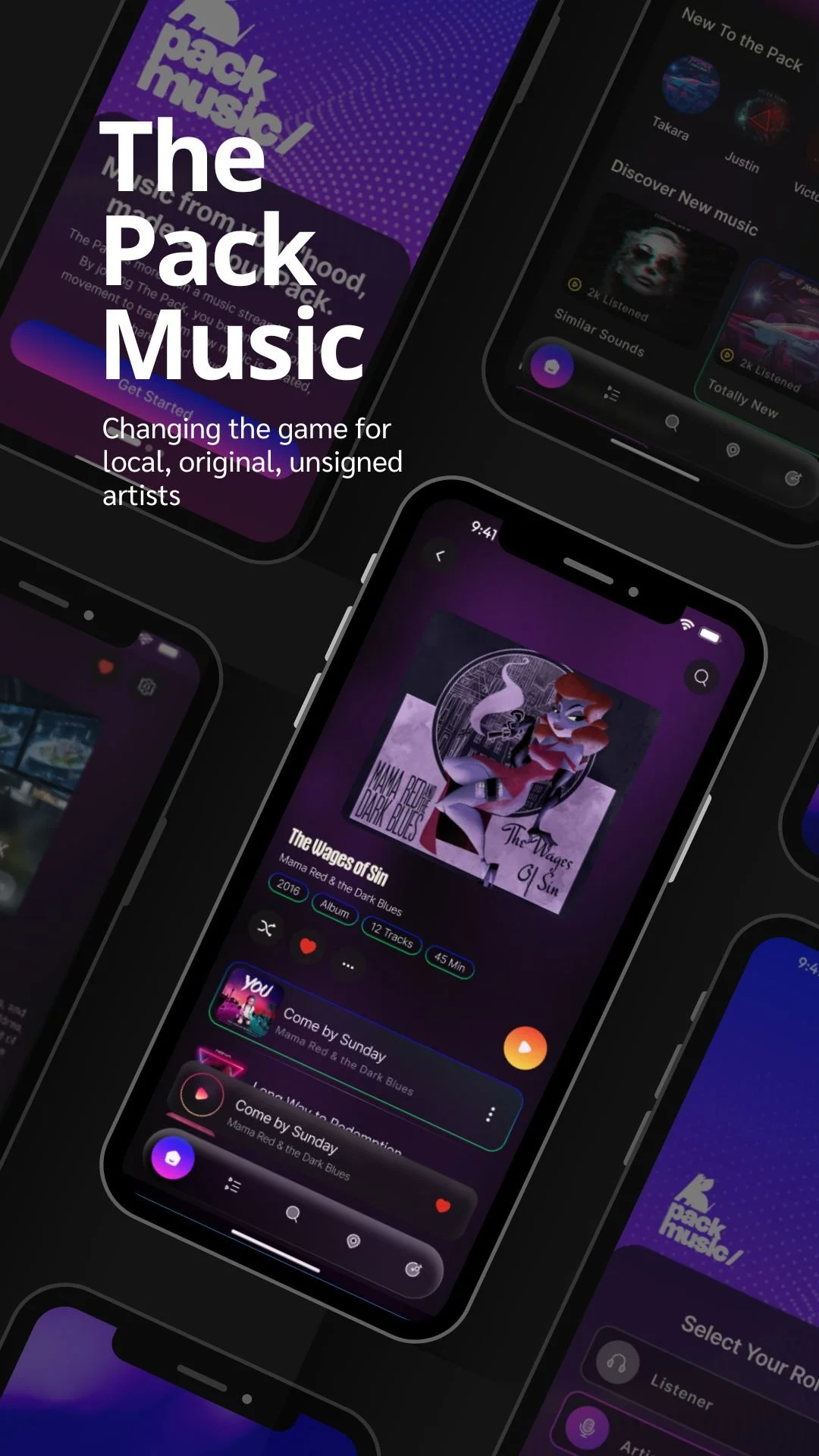How One Platform Could Generate More Artist Income Than All Government Funding Combined
Melanie Bainbridge
3 minute read
Here's a number that should make every Australian musician do a double-take: The Pack Music Cooperative could generate $420 million annually in direct payments to unsigned Australian artists.
For context, that's about 10 times the combined federal and state music investment across the entire country. Let me repeat that because it I know sounds made up: one single cooperative streaming platform could deliver more money directly to creators than every government music program in Australia combined.
And yet, after 20+ grant applications over five years, The Pack has received exactly $5,000 in government funding (and no, I didn’t miss a zero). I know, I know - the math isn’t quite mathing there, is it?
This isn't some pie-in-the-sky dreaming. The government literally commissioned research that proves it can work. Music Australia's own research shows that 42% of music-engaged Australians would pay for a streaming platform devoted exclusively to Australian music.
So, let me walk you through the beautiful, simple math (and as someone who doesn’t do numbers, that phrase didn’t come easily). With 15 million Australians using streaming services weekly, 42% of users translates to around 6 million potential subscribers. At $10/month, that's up to $600 million annually in total revenue. But here's where The Pack's economics get revolutionary: 70% goes directly to artists ($420 million), 15% funds sector development grants ($90 million), and just 15% covers platform operations ($90 million).
Compare that to the globalised streaming scams, where your $12-$20/month goes into a global pool and gets distributed based on a musician’s percentage of total worldwide streams. This means most of your money ends up paying Ed Sheeran and Drake, even if you exclusively listen to brilliant local artists. The Pack flips this completely - your $10/month goes only to artists you actually listen to, not to global chart-toppers you couldn't care less about.
No shade here, but let's compare this to current Australian music funding. As an approximate - Federal Music Australia gets $17 million, NSW Sound NSW gets $18.5 million, WA's Live Music Package gets $2.75 million. The total across all major programs reaches roughly $40-50 million annually. The Pack's potential? $510 million annually in artist payments and sector development. We could deliver over 10 times more support than all government grant programs combined, and unlike competitive government grants, it's entirely self-sustaining through voluntary subscriptions from people who want to support local music.
The government's own research reveals who's most excited about a project like The Pack, and surprise - it's not some niche market. First Nations Australians showed particularly high enthusiasm, which makes sense given their need for better representation and cultural platform control. Young people are equally keen, with 66% wanting to discover more Australian music despite algorithms designed to bury local content under avalanches of international hits. Regional Australians feel underserved by platforms that prioritise urban and international acts, making them natural early adopters.
These aren't fringe demographics - they're substantial communities ready to invest real money in local music when given a platform that actually serves them instead of exploiting them.
But here's how we’ve watched government priorities actually work in the real world over the past few years, at least here in good old WA, and I promise this will make you laugh-cry. Things that get millions without question: $15 million for Coldplay to play one night in Perth (benefits: overseas label bosses get richer, already famous musicians get richer), $375 million annually for sports in WA alone (benefits: many balls are kicked, many sportsgrounds are lit), $315 million annually for fossil fuel subsidies in WA (benefits: climate destruction accelerates nicely).
Things that get rejected despite proven demand: platforms that could transform entire music economies, technology that puts artists in control of their careers, solutions that address streaming inequality directly.
But when artists own the platform, everything changes. Democratic governance means artists vote on platform policies instead of shareholders extracting profits for yacht purchases. Transparent economics provides clear reporting on how every dollar flows instead of disappearing into corporate black boxes. Community investment ensures surplus funds get reinvested in local music infrastructure instead of into shareholders’ offshore holdings. Cultural sovereignty means communities control their platforms instead of surrendering them to tech giants who view culture as data to be harvested and have never picked up an instrument (true story, ask Dan).
This is our version of workplace democracy applied to the means of cultural production. Revolutionary? Maybe. Ethical? Absolutely.
The Pack's model doesn’t just have revolutionary potential for Australia - it's exportable to every country where local music cultures are being homogenised by global platforms. France has 46 million streaming users and strong cultural protection policies. Brazil has 110 million streaming users with overwhelming preference for Portuguese content. Canada has 25 million streaming users within cultural frameworks already supporting local platforms and Indigenous creators.
Conservative projections suggest tens (if not hundreds) of millions of potential international users across key markets. Each expansion multiplies the cooperative's power while proving communities can reclaim control from platform colonialism.
Here's the beautiful (but kinda sad) part… The Pack needs less than $500,000 to complete development and launch. That's less than 2% of NSW's Sound NSW allocation, roughly 3% of federal Music Australia funding, and a tiny fraction of what we spend on sports stadiums and mining subsidies. For less than the price of one Perth apartment, the government could unlock a platform generating over 1,000 times that investment in annual artist support.
The Pack represents more than streaming economics - it's about taking back cultural and digital sovereignty in an age of platform colonialism. Instead of surrendering our musical infrastructure to globalised monopolies and their shareholders, we could collectively own the means of digital cultural production. That’s what cooperatives do. When communities control their streaming platforms, profits stay local, algorithms serve creativity, artists build careers from community support, and cultural diversity thrives instead of being homogenised into algorithmic mush and AI slop. Seriously, how can this be bad?
We can choose to continue subsidising platforms that extract value from Australian artists while enriching tech billionaires who've never contributed anything to our culture. We can choose to keep funding traditional programs that deliver modest support to a few lucky grant recipients while most artists struggle below poverty lines.
Or we could invest $500,000 in a platform that could generate $420 million annually for unsigned artists while pioneering a cooperative model that puts creators in control for the first time in Australia’s digital history. We could invest in real sustainability.
The research exists. The demand is proven. The technology works. The only missing ingredient is political courage to take a risk and back innovation that threatens existing power structures built on artist exploitation.
The Pack isn't just a streaming platform - it's the proof of concept for a sustainable music economy that serves creators instead of extracting from them. It's democracy applied to digital infrastructure. It's the future of music… if we're brave enough to build it.

